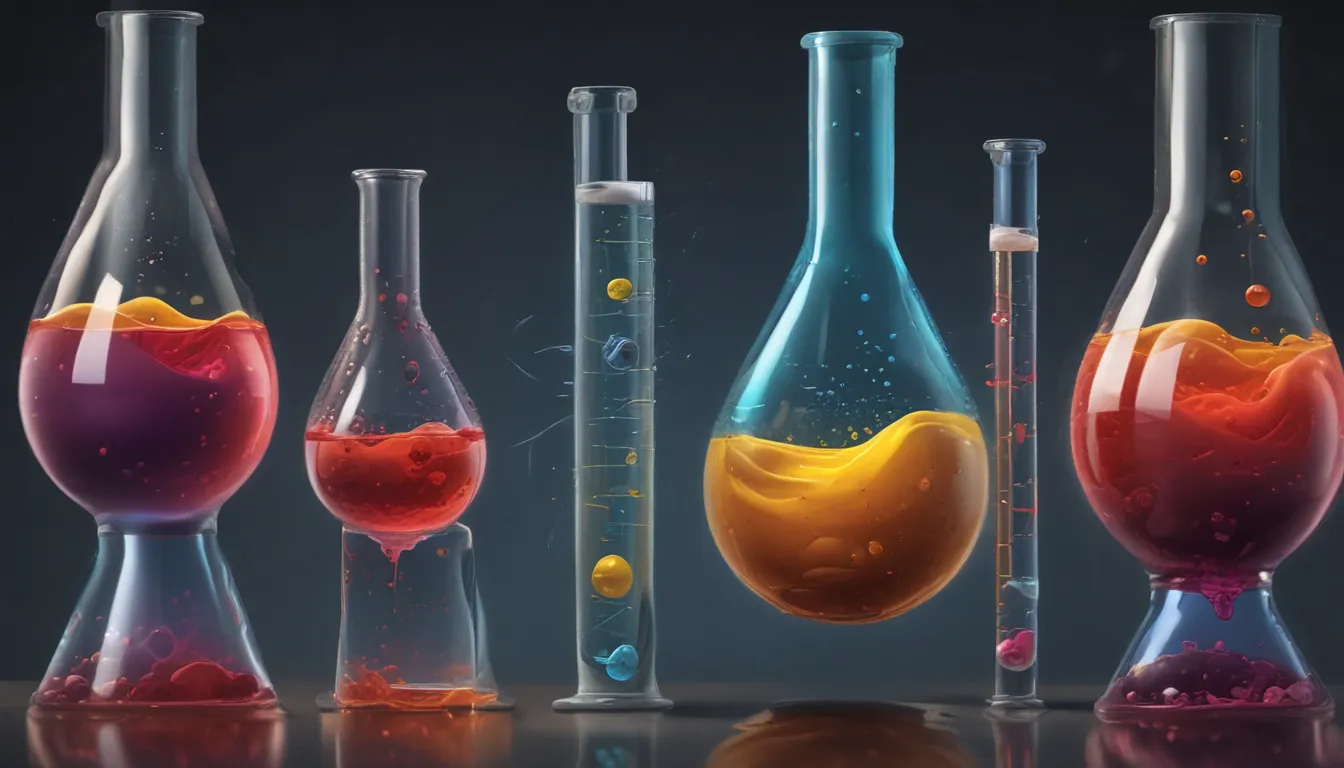A Note About Images: The images used in our articles are for illustration purposes only and may not exactly match the content. They are meant to engage readers, but the text should be relied upon for accurate information.
Are you ready to unravel the secrets behind the speed of chemical reactions and the factors that influence them? Let’s embark on a fascinating journey into the realm of kinetics, a captivating branch of chemistry that sheds light on the dynamics of chemical processes. From understanding reaction rates to exploring the intricacies of catalysis, kinetics offers a wealth of knowledge that is essential for scientists and researchers. In this article, we will delve into 16 fascinating facts about kinetics that will not only educate but also inspire you to learn more about the world of reaction rates and molecular transformations.
Unveiling the World of Kinetics
Kinetics serves as the speedometer of chemistry, providing us with valuable insights into how fast reactions occur and what factors impact their rates. Think of it as being a chemistry detective, investigating the dynamics of chemical processes and uncovering the underlying mechanisms that drive reactions. By studying kinetics, scientists can predict how molecules behave, design safer energy sources, and even optimize industrial processes. Let’s explore the key concepts and applications of kinetics that make it such a vital field in the world of chemistry.
Understanding Reaction Rates and Mechanisms
At the heart of kinetics lies the study of reaction rates and mechanisms. This branch of chemistry delves into how fast or slow chemical reactions occur and investigates the various factors that influence the rate at which reactions proceed. By manipulating parameters such as temperature, concentration, catalysts, and surface area, scientists can control the speed of reactions, leading to practical applications in industries such as pharmaceuticals and materials science.
One of the key concepts in kinetics is the reaction rate, which measures the speed at which reactants are converted into products. This rate is determined by the frequency of effective collisions between particles and the energy barrier that must be overcome for the reaction to take place. By understanding reaction rates, scientists can predict the behavior of molecules and design strategies to optimize the efficiency of chemical processes.
Applications of Kinetics in Various Fields
Kinetics plays a vital role in a wide range of interdisciplinary areas, including materials science, biochemistry, pharmacology, and environmental science. In biochemistry, for example, kinetics is essential for understanding enzyme kinetics, which are crucial in designing drugs and discovering new therapeutic targets. Additionally, the study of kinetics helps in understanding drug metabolism in the human body, leading to the development of optimal drug dosages and administration schedules.
In environmental chemistry, kinetics is key to studying the degradation of pollutants in air, water, and soil. By understanding the kinetics of pollutant degradation, scientists can develop effective strategies for environmental remediation and cleanup. Moreover, kinetics provides insights into the stability of molecules, their reactivity, and the performance of catalysts, enabling scientists to predict product shelf life and design more efficient chemical processes.
Exploring the Intricacies of Kinetic Modeling
Kinetic modeling serves as an essential tool for simulating complex chemical reactions and predicting their outcomes. By using mathematical equations and computer simulations, scientists can gain a deep understanding of reaction mechanisms and predict the behavior of chemical systems under different conditions. This approach allows researchers to explore the intricate details of chemical reactions and develop innovative solutions to real-world challenges across various scientific disciplines.
The Role of Kinetics in Everyday Life
While kinetics may seem like a complex subject, its applications extend beyond the laboratory and into our everyday lives. From cooking and digestion to the decay of materials, the principles of kinetics play a crucial role in optimizing processes and enhancing our daily experiences. By understanding the rates at which molecules move and transform, we can gain valuable insights into the behavior of substances in various environments, ranging from biological systems to industrial processes.
The Historical Significance of Kinetics
The study of kinetics has a rich historical background, with pioneers such as A.A. Noyes and Svante Arrhenius making significant contributions in the late 19th and early 20th centuries. Their work laid the foundation for our current understanding of reaction rates and mechanisms, shaping the field of kinetics as we know it today. Through ongoing research and continuous discoveries, the study of kinetics continues to evolve, expanding our knowledge of how reactions occur and how we can manipulate them for practical applications.
Conclusion: Embracing the World of Kinetics
In conclusion, kinetics offers a fascinating glimpse into the world of reaction rates and chemical processes. By exploring the key concepts of kinetics, such as reaction rates, rate laws, and reaction mechanisms, we can gain valuable insights into the microscopic world of molecules and their behavior. Whether you’re a student, a researcher, or simply curious about the world around you, delving into the realm of kinetics can open up a new understanding of the chemical landscape. So, dive in, explore, and embrace the captivating world of kinetics!
FAQs: Exploring Kinetics Further
- What is kinetics?
-
Kinetics is the branch of chemistry that deals with the study of rates and mechanisms of chemical reactions.
-
Why is kinetics important?
-
Kinetics allows us to understand the speed at which reactions occur and the factors that influence their rates, essential for optimizing reaction conditions and designing efficient industrial processes.
-
How are reaction rates determined?
-
Reaction rates are determined by measuring how the concentration of reactants changes over time using experimental techniques such as spectroscopy or chromatography.
-
What are rate laws?
-
Rate laws express how the rate of a chemical reaction depends on the concentrations of reactants, helping us understand the relationship between reactant concentrations and reaction rates.
-
Can kinetics predict reaction outcomes?
-
By studying kinetics, we can predict reaction outcomes and determine the conditions under which specific reactions will proceed, essential for designing reactions with desired products.
-
How is kinetics used in everyday life?
-
Kinetics is involved in various everyday processes, such as cooking, digestion, and the decay of materials, optimizing these processes and enhancing our daily lives.
-
Are there practical applications of kinetics?
-
Yes, kinetics has practical applications in fields like pharmaceuticals, environmental sciences, and chemical engineering, aiding in drug development, pollution control, and designing efficient industrial processes.
-
Can kinetics be used to predict the shelf life of products?
-
Yes, kinetics plays a role in predicting the shelf life of products by studying the rate at which they degrade or react with other substances.
-
How can one study kinetics?
- One can study kinetics through textbooks, online resources, and laboratory experiments, integral to many chemistry courses at high school and university levels.
By exploring the intriguing world of kinetics, we gain a deeper understanding of the mechanisms that govern chemical reactions and unlock new possibilities for scientific discoveries. Remember, each fact in the field of kinetics contributes to our broader understanding of the natural world, shedding light on the mysteries of chemical transformations and reaction dynamics. Join us on this enlightening journey as we delve deeper into the captivating world of kinetics and its endless possibilities.
Is the article helpful? We are committed to delivering engaging and trustworthy content, ensuring that each fact we share is both fascinating and credible. Trust in our dedication to quality and authenticity as we continue to explore the vast landscape of chemistry and unveil its hidden treasures.






